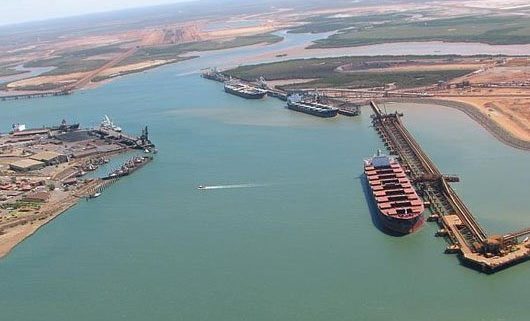Where laytime fits into shipping’s great digitisation drive

Simon Francis, founder of online layime management tool Falmor, adds to our growing series on the future of shipping.
There has been a lot of discussion and articles recently on the subject of shipping digitisation. How technology can play a part in improving efficiencies and so margins, while also better managing risk for all those involved in the shipping supply chain. In fact, at SMM in 2016 digitalisation was chosen as one of the main topics. Frank Horch, Hamburg senator for transport, economics and innovation noted: “Digitalisation is the key to improved competitiveness.”
Klaveness too are big proponents on the benefits of technology and are pretty explicit on who will come out on top when it comes to embracing technology, noting on their site: “We believe the future winners are those who embrace digital opportunities.”
Most of the discussion thus far has been surrounding technology and big data improving vessel optimisation whether from a fuel management standpoint or improving cargo efficiency. One element of the supply chain that would benefit and has been less focused on, is the area of laytime management and the fact that the uptake of digitisation and collaboration solutions can be leveraged to help bring gains to the supply chain.
With regards to laytime the questions businesses should be asking themselves are things such as:
1. Do I know my current laytime exposure across all shipments?
2. Which counterparties do I hold most risk (demurrage exposure) with?
3. How long does it take to settle my laytime calculations?
4. Am I able to ensure I don’t miss a timebar?
5. Can I analyse the data captured on Statement of Facts and Laytime Calcs to assist me in my broader business?
Can your Excel spreadsheets or historic in-house CD-Rom based Laytime Calculator programme or non collaborative VMS system answer those questions right now?
The answers to all these questions and the speed at which a business can answer them, quite quickly highlights how good, or in most cases bad, a business’s management of their laytime risk and cash accounting is. For an owner with a large fleet of vessels or a charterer moving significant tonnage these risks and dollars can add up to a considerable sum. Surely management of that risk and cash should be an area to look to improve on?
In a market where margins are tight, the benefits of improving risk and cash management and process efficiency should be clear to any business. If you can improve an area of the business by 1%, great. If you can do that times 10 then the benefits start to add up. This is what businesses should be focusing on, looking at individual processes and aiming at improving them not by that 1% but doing that times 10 to add true value. Big wins are great but they take time and are generally cash intensive, focusing on the processes around the edges and improving those are generally and easier and cheaper way to deliver improved margins to the business, especially in a market where the commercial margins are already tight.
At the same time the benefits of reducing administration heavy tasks for operators are obvious, it allows them to add value and protect P+L by focusing more on managing supply chain risk which, let’s be honest, is what they are employed to do. Not only that if digitisation allows you to improve the speed at which you can agree and settle laytime calculations then that has to have a positive effect on a business’s working cost of capital, especially for shipowners and operators
Troels Bilcher Danielsen of the Danish Maritime Authority is pretty clear on his view of the role of technology in the shipping industry going forward. “We must not hamper the digital possibilities but support the industry in addressing the challenges posed by new users of data, new platforms and new types of services and vessels,” he says.
So what are you waiting for, now is the time to look into how digitisation can start to improve the efficiencies of for your business, wherever in the shipping supply chain you sit.

Nothing to disagree with there, Francis, but I wonder if there might be more?
Two thoughts:
1. Single point data entry would be a Godsend; how can this be achieved in laytime calculations?
2. The real costs of hanging around, if I can so put it, are something that we are aware of anecdotally, but if total port delays could be computed accurately we could see big savings. To illustrate – a Master today may be tempted to crack on just so that he can show his funnel and start time counting. It would be more efficient overall and certainly better for the planet if he could optimise his ETA without penalty..